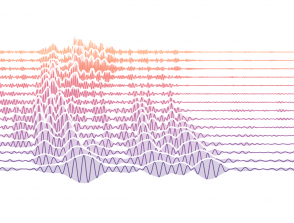Détection, characterisation and modelling of very low frequency earthquakes
Start: 01 October 2024
End: 30 September 2027
Supervisors :
Martin Vallee
Related teams :
Seismology
Most earthquakes follow well-established laws of scale, which relate the duration of their source to their magnitude. For these classic earthquakes, events of magnitude 5 last no more than a few seconds, while earthquakes 1,000 times larger (magnitude 7) last no more than a few tens of seconds. Some earthquakes, however, are known to deviate from this general behaviour, with a longer duration and lower high-frequency content than their magnitudes predict. One well-known example is the “earthquakes tsunami”, whose very long duration is a strong indicator of their tsunami potential. Another intriguing category are the VLFEs (“Very Low Frequency Earthquakes”) which are almost undetectable by standard detection tools. On a global scale, their abundance has yet to be determined and their role in the seismic cycle needs to be better understood, so the first part of this thesis aims to make progress in their systematic detection. To this end, this thesis will analyse the long time series (>20 years) provided by the broadband seismological stations of the regional or global networks (Geoscope, GSN in particular). A template-matching and double-difference approach will be used to find new events on the basis of their similarity to known earthquakes. Once these events have been detected (generally at low to moderate frequencies), analysis of their full spectrum enables us to characterise whether their sources are classic or original.The second part of this thesis aims to better characterise the VLFEs detected, with a view to obtaining a better mechanical understanding of them. To do this, a first step will be to determine their source function, which translates how and with what complexity the seismic moment relaxes as a function of time. Deconvolutive approaches will provide access to this information and give a better understanding of the origin of the low-frequency nature of these sources. A final avenue will be to build physical rupture models capable of accounting for the properties of the source functions. Mechanically, the origin of the weak high-frequency radiation from VLFEs is often attributed to specific frictional characteristics of the interface, to the transition between unstable behaviour (generating classic earthquakes) and stable behaviour (generating continuous slip). This hypothesis could be tested with a view to reproducing VLFEs in the different contexts in which they have been observed. The combination of these two aspects should enable progress to be made in both characterising and understanding these low-frequency phenomena. The absence or abundance of VLFEs in a fault zone provides information about the nature of the contact at the interface. Their relationship with other deformation processes at work in seismogenic zones (slow earthquakes, stable slip, classic earthquakes) could also be better documented and interpreted.





